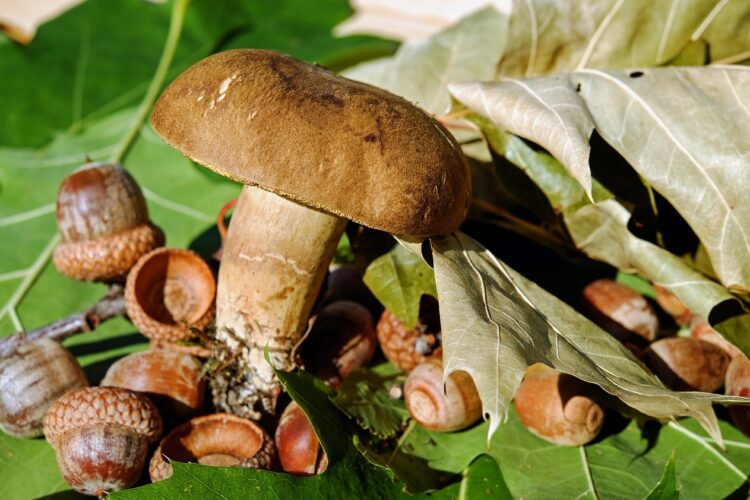In a world increasingly dominated by processed food and global supply chains, foraging offers a refreshing return to our roots—quite literally. Foraging, the practice of gathering wild, edible plants, mushrooms, and other natural ingredients, has seen a resurgence as more people seek out sustainable, nutritious, and locally-sourced food. Whether you’re a curious beginner or a seasoned forager, understanding what nature has to offer can transform your meals and your health.
Why Forage?
Foraging isn’t just about free food. It’s a way to reconnect with nature, eat seasonally, and experience flavours you can’t find at the grocery store. It encourages biodiversity, supports local ecosystems, and reduces your carbon footprint. Wild foods also tend to be far richer in vitamins, minerals, and antioxidants than their cultivated counterparts.
Foraging Safety Tips
- Correct Identification: Never consume a plant unless you’re 100% sure it’s safe.
- Use Resources: Consult guidebooks, apps, or take a foraging course.
- Go with Experts: Join a local foraging group or guided walk.
- Harvest Responsibly: Only take what you need and leave enough for wildlife.
- Avoid Polluted Areas: Stay away from roadsides, industrial zones, and pesticide-treated areas.
What You Can Forage and How to Use It
1. Wild Garlic (Ramsons)
- Season: Spring
- Location: Damp woodlands
- Uses: Pesto, soups, risottos, salads
- Health Benefits: High in vitamin C, iron, magnesium; supports heart health and immune function.
2. Nettles
- Season: Spring to early summer
- Location: Streams, hedgerows
- Uses: Soups, teas, pasta dishes
- Health Benefits: Rich in iron, calcium, and protein; anti-inflammatory, supports joints and allergy relief.
3. Chickweed
- Season: All year (best in spring/fall)
- Location: Gardens, fields
- Uses: Salads, smoothies, omelets
- Health Benefits: High in vitamin C and antioxidants; aids digestion and weight loss.
4. Dandelions
- Season: Spring through fall
- Location: Lawns, fields
- Uses: Leaves in salads, flowers in fritters or wine, roots for tea or coffee substitute
- Health Benefits: Supports liver detox, rich in vitamins and antioxidants.
5. Wild Berries (Blackberries, Elderberries, Raspberries)
- Season: Summer to early fall
- Location: Woodland edges, fields
- Uses: Jams, crumbles, syrups, wines
- Health Benefits: High in vitamin C and antioxidants; elderberries boost immune function.
6. Morel Mushrooms
- Season: Spring
- Location: Forest floors
- Uses: Pasta, sautés, sauces
- Health Benefits: Rich in vitamin D and iron; immune-boosting, may help regulate blood sugar.
7. Wood Sorrel
- Season: Spring to fall
- Location: Shady woodlands
- Uses: Garnish, salads, sauces
- Health Benefits: High in vitamin C; aids digestion, anti-inflammatory.
8. Pine Needles
- Season: Year-round
- Location: Evergreen forests
- Uses: Teas, syrups, broths
- Health Benefits: Rich in vitamin C and A; supports immune and respiratory health.
Cooking with Wild Ingredients

Foraged foods bring unique flavours to simple dishes:
Recipe Ideas
- Nettle Soup: Sauté onions, potatoes, and garlic. Add blanched nettles and stock. Blend until smooth.
- Wild Garlic Pesto: Blend wild garlic leaves with olive oil, lemon juice, Parmesan, and nuts.
- Berry Compote: Simmer wild berries with honey, lemon zest, and cinnamon.
- Morel Risotto: Cook Arborio rice with shallots, morels, and stock; finish with Parmesan.
Health Benefits of Foraged Foods
Wild foods grow without synthetic fertilizers or pesticides and adapt to their environments, making them exceptionally rich in nutrients and phytochemicals.
Key Benefits
- Nutrient-Dense: Higher in vitamins and minerals
- Supports Gut Health: Rich in fibre and prebiotics
- Anti-Inflammatory: Helps prevent chronic disease
- Boosts Immunity: Especially elderberries, garlic, pine needles
Ethical and Sustainable Foraging

Responsible foraging ensures future abundance:
- Follow Laws: Check local regulations
- Take Less: Harvest no more than 1/3 of what you find
- Use Proper Tools: Minimize damage to plants and roots
Final Thoughts
Foraging turns a simple walk into a treasure hunt and offers an enriching way to connect with your environment. As you gain experience, your wild pantry will grow, transforming your meals into seasonal, nutrient-dense celebrations of nature.
Happy foraging—and happy cooking!


